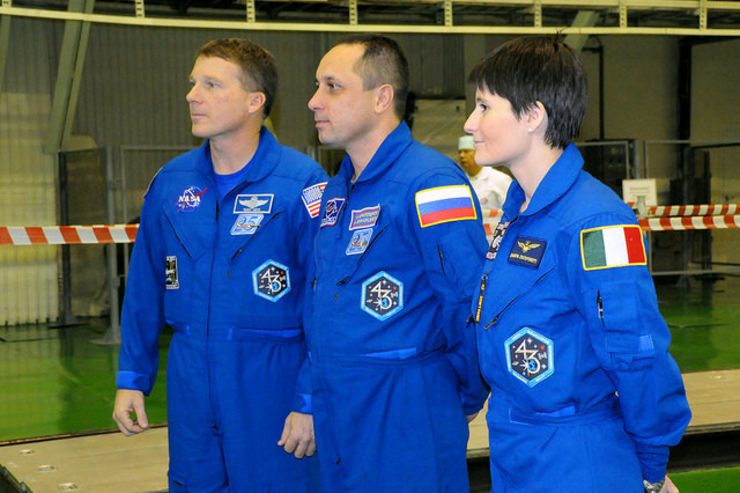SUMMARY
This is AI generated summarization, which may have errors. For context, always refer to the full article.

MOSCOW, Russia – A Russian Soyuz spacecraft carrying Italy’s first female astronaut safely blasted off Sunday, November 23, to begin its journey to the International Space Station.
Samantha Cristoforetti was joined by Russian cosmonaut Anton Shkaplerov and American astronaut Terry Virts as the Soyuz TMA-15M spacecraft launched from Russia’s Baikonur Cosmodrome in Kazakhstan at 2101 GMT, the Russian space agency Roscosmos said in a statement.
“Soyuz safely in orbit, next stop ISS,” NASA wrote in a tweet, while live images of the launch showed Virts giving the thumbs up and smiling.
Cristoforetti, Virts and Shkaplerov were to dock around 6 hours after taking off at the space station where they are to live until May 2015.
Their voyage also mean substantial food supplies, with nearly half a kilo of caviar in their baggage and an espresso machine.
“There will be 15 boxes of 30 grams each of caviar, but also apples, oranges, tomatoes and 140 doses of freeze dried milk and black tea without sugar,” a space station official was quoted as saying by Russian press agency TASS.
Astronauts on the station will also finally be able to enjoy a decent brew thanks to the 20-kilogram machine designed by famed Italian coffee makers Lavazza and engineering firm Argotec, which specializes in making space food.
Cristoforetti, 37, who is also a captain in the Italian airforce, “will be not only the first female astronaut from Italy to go into space, but also the very first astronaut in the history of the conquest of space to savor an authentic Italian espresso in orbit,” the two companies said in a statement.
In total 16 countries work on the ISS, including Russia and the United States, which finance most of its operation. A team of astronauts is always aboard, with stays of up to 6 months.
Launched into orbit in 1998, this outpost and orbiting laboratory, which cost $500 billion (404 billion euros) to build, saw its lifespan extended by another four years by NASA. It’s now expected to remain in service until 2024.
NASA depends entirely on Russia to send its astronauts to the ISS, which costs the United States $70 million (56 million euros) per person in Soyuz rockets. – Rappler.com
Add a comment
How does this make you feel?
There are no comments yet. Add your comment to start the conversation.